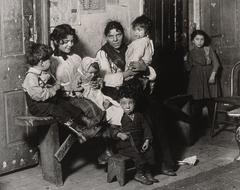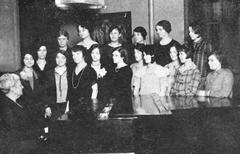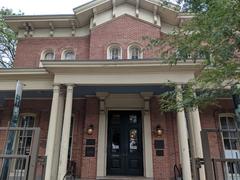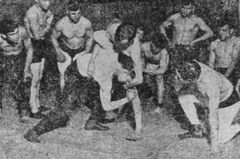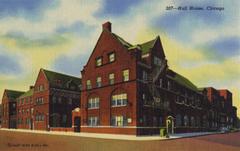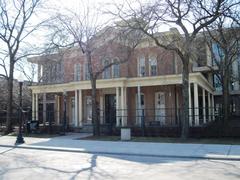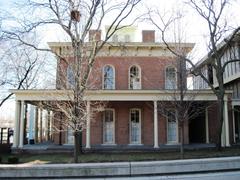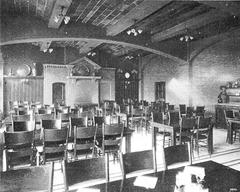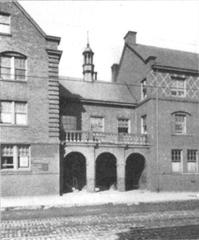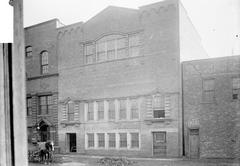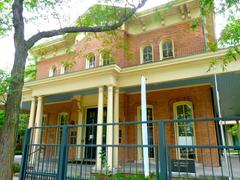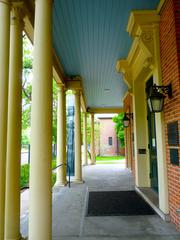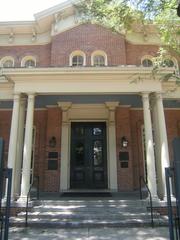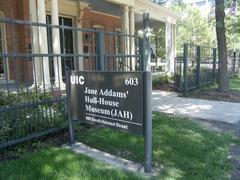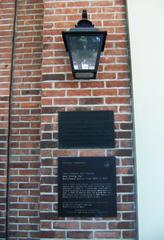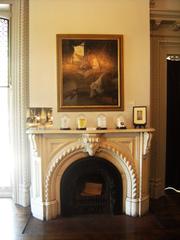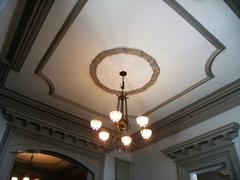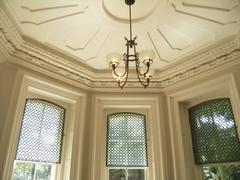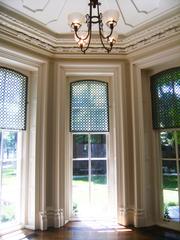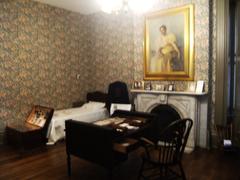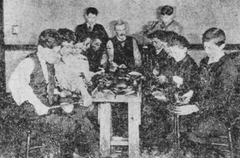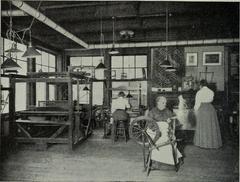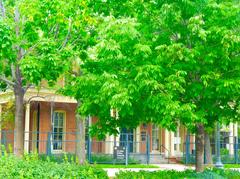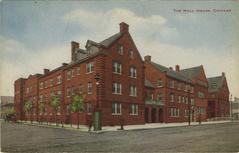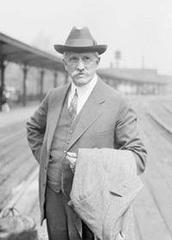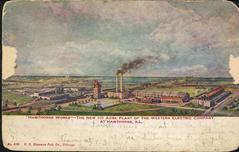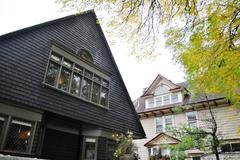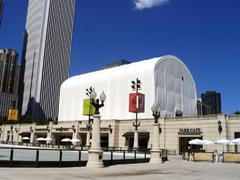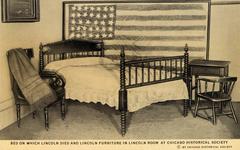
Comprehensive Guide to Visiting Hull House, Chicago, United States
Published Date: 31/07/2024
Introduction to Hull House
Welcome to our comprehensive guide to visiting the Jane Addams Hull-House Museum in Chicago, Illinois. This iconic historical site stands as a testament to the pioneering social reform work of Jane Addams and Ellen Gates Starr, who founded Hull House in 1889. Nestled at 800 S. Halsted Street, this settlement house was created to provide social and educational opportunities for the working-class population, particularly European immigrants (Choose Chicago). Jane Addams, the first American woman to win the Nobel Peace Prize, used Hull House as a platform to advocate for social justice, women’s rights, and peace, leaving a lasting impact on both local and national social policies (Choose Chicago).
Hull House quickly expanded from a single building to a complex of 13 buildings, offering a wide array of services including legal aid, health care, housing assistance, and educational programs (Hull House Museum). It also became a hub for cultural and intellectual activity, attracting influential figures and hosting lectures, concerts, and art exhibitions. The museum today aims to preserve and interpret this rich history, offering visitors a glimpse into the lives of the immigrant community and the progressive reformers who shaped early social work and public policies.
This guide will provide all the details you need for a memorable visit, including visitor information, the historical significance of Hull House, travel tips, nearby attractions, and special events. Whether you are a history enthusiast, a student, or a tourist, this guide will help you explore and appreciate the enduring legacy of Jane Addams and her colleagues.
Table of Contents
- Introduction
- Founding and Early Years
- Jane Addams: A Visionary Leader
- Expansion and Services
- Social and Political Impact
- Cultural and Educational Contributions
- Decline and Legacy
- Preservation and Museum
- Exhibitions and Public Programs
- Visiting Information
- Accessibility and Visitor Tips
- Nearby Attractions
- Travel Tips
- Special Events and Guided Tours
- FAQ
- Conclusion
Discover Hull House: Visiting Hours, Tickets, and History of Chicago’s Iconic Settlement
Founding and Early Years
Hull House was founded in 1889 by Jane Addams and Ellen Gates Starr. Located at 800 S. Halsted Street in Chicago, Illinois, it was initially established as a settlement house to provide social and educational opportunities for working-class people, particularly European immigrants. The house was named after Charles J. Hull, the original owner of the building, which was constructed in 1856 (Choose Chicago).
Jane Addams: A Visionary Leader
Jane Addams, the first American woman to receive the Nobel Peace Prize, was a pioneering social reformer whose work at Hull House significantly impacted both local and national social policies. Her commitment to social justice, women’s rights, and peace advocacy made Hull House a hub for progressive thought and action. Addams’ leadership attracted a diverse group of reformers, including Florence Kelley, Julia Lathrop, and Alice Hamilton, who contributed to various social causes (Choose Chicago).
Expansion and Services
Hull House quickly expanded from a single building to a complex of 13 buildings, offering a wide range of services to the community. These included a kindergarten, a day nursery, an employment bureau, an art gallery, a library, and various educational and recreational programs. The settlement house also provided crucial services such as legal aid, health care, and housing assistance, addressing the immediate needs of the immigrant population (Hull House Museum).
Social and Political Impact
Hull House played a significant role in advocating for social and political reforms. The residents conducted extensive research on social issues, including labor conditions, public health, and housing. Their findings were instrumental in pushing for legislative changes, such as child labor laws, women’s suffrage, and improved working conditions. The settlement house also served as a training ground for future social workers and reformers, influencing the development of social work as a profession (Choose Chicago).
Cultural and Educational Contributions
In addition to its social services, Hull House was a cultural and educational center. It hosted lectures, concerts, and art exhibitions, attracting some of the world’s most important thinkers, artists, and activists. The Residents’ Dining Hall, an Arts and Crafts building, was a focal point for these activities, fostering a vibrant intellectual and cultural community. The Hull House Theater, established in 1899, was one of the first theaters in the United States to produce plays by and for working-class people (Choose Chicago).
Decline and Legacy
The Great Depression and changing social conditions led to the decline of Hull House in the mid-20th century. By the 1960s, many of its services had been taken over by government agencies and other organizations. The original Hull House building was designated a National Historic Landmark in 1965, and the Hull House Association continued to operate until it closed in 2012 due to financial difficulties. However, the legacy of Hull House lives on through the Jane Addams Hull-House Museum, which preserves the history and vision of the settlement house (Hull House Museum).
Preservation and Museum
Today, the Jane Addams Hull-House Museum is located in two of the original settlement house buildings: the Hull Home and the Residents’ Dining Hall. The museum serves as a dynamic memorial to Jane Addams and her colleagues, preserving and interpreting the history of Hull House and its impact on social reform. The museum offers guided and self-guided tours, exhibitions, and public programs that explore the history of social justice, women’s suffrage, and the lives of the immigrant community in Chicago (Hull House Museum).
Exhibitions and Public Programs
The museum features permanent and rotating exhibitions that highlight the history and legacy of Hull House. One notable exhibition, “Radical Craft: Arts Education at Hull-House, 1889-1935,” explores the role of arts education in the settlement house’s mission. The museum also hosts public programs, workshops, and lectures that engage visitors in discussions about contemporary social issues, continuing the tradition of social engagement and education that Jane Addams and her colleagues championed (Hull House Museum).
Visiting Information
The Jane Addams Hull-House Museum is open to the public from Tuesday to Friday, 10:00 am to 4:50 pm, and on Sunday from 12:00 pm to 4:50 pm. The museum is closed on Mondays and Saturdays, as well as on specific holidays and for essential maintenance. A suggested donation of $5 per person supports the museum’s educational initiatives, exhibitions, and free public programs. Admission is free for University of Illinois staff, students, and faculty (Hull House Museum).
Accessibility and Visitor Tips
The museum is committed to accessibility and offers various accommodations for visitors with disabilities. Masks are optional and available at the Visitor Service Desk. Group visits and public tours can be scheduled in advance, and walk-in visitors are welcome. For more information on hours of operation, directions, parking, and accessibility, visitors can contact the museum directly or visit their website (Hull House Museum).
Nearby Attractions
While visiting the Jane Addams Hull-House Museum, you can explore other nearby attractions in Chicago. The Art Institute of Chicago, Millennium Park, and the Field Museum are all within a short distance, offering a rich cultural and educational experience. Consider planning a full day to explore these sites and gain a deeper understanding of Chicago’s historical and cultural landscape.
Travel Tips
When planning your visit to Hull House, consider using public transportation to avoid the hassle of parking. The museum is easily accessible via the CTA Blue Line and several bus routes. Check the museum’s website for the latest travel advisories and updates on public transportation options.
Special Events and Guided Tours
The museum frequently hosts special events, including themed tours, lectures, and educational workshops. These events provide unique opportunities to delve deeper into specific aspects of Hull House’s history and its impact on social reform. Guided tours are available and can be tailored to the interests of your group, offering a personalized and enriching experience.
FAQ
Q: What are the Hull House visiting hours? A: The museum is open from Tuesday to Friday, 10:00 am to 4:50 pm, and on Sunday from 12:00 pm to 4:50 pm. It is closed on Mondays and Saturdays.
Q: How much are Hull House tickets? A: The museum operates on a suggested donation basis of $5 per person. Admission is free for University of Illinois staff, students, and faculty.
Q: Are there any special events at Hull House? A: Yes, the museum hosts a variety of special events, including themed tours, lectures, and workshops. Check the museum’s website for the latest schedule.
Q: Is Hull House accessible for visitors with disabilities? A: Yes, the museum offers various accommodations for visitors with disabilities. Contact the museum for specific accessibility needs.
Q: What nearby attractions can I visit? A: Nearby attractions include the Art Institute of Chicago, Millennium Park, and the Field Museum.
Conclusion
The Jane Addams Hull-House Museum offers a unique glimpse into the history of social reform and the lives of Chicago’s immigrant community. Plan your visit today to explore this iconic historical site and learn about the enduring legacy of Jane Addams and her colleagues. Don’t forget to check out nearby attractions, attend special events, and make use of our travel tips for a seamless experience. For more updates, follow us on social media and visit our website.
References and Further Reading
- Choose Chicago. (n.d.). Jane Addams Hull-House Museum. https://www.choosechicago.com/listing/jane-addams-hull-house-museum/
- Choose Chicago. (n.d.). Chicago’s Historic House Museums. https://www.choosechicago.com/articles/architecture-and-history/chicagos-historic-house-museums/
- Hull House Museum. (n.d.). Reserve Your Visit. https://www.hullhousemuseum.org/reserve-your-visit
- Hull House Museum. (n.d.). Hours. https://www.hullhousemuseum.org/hours
